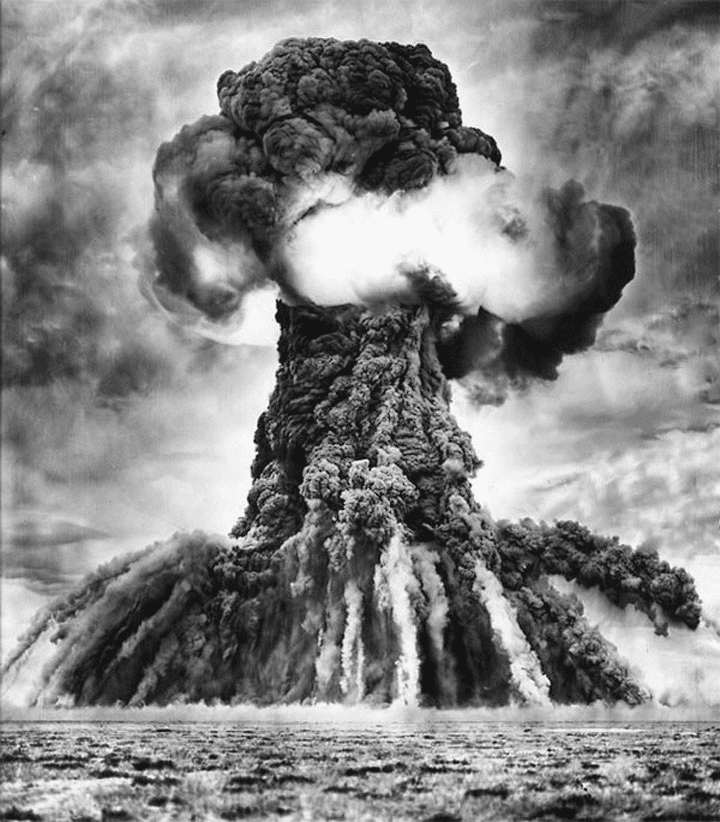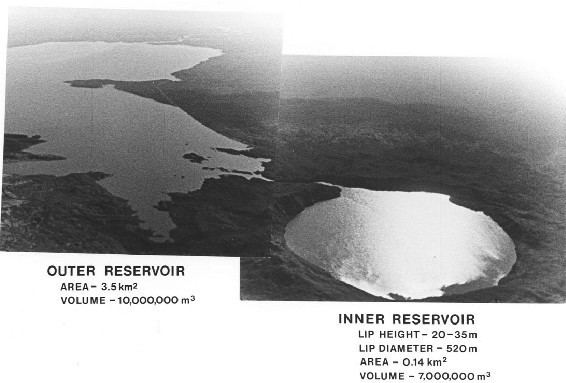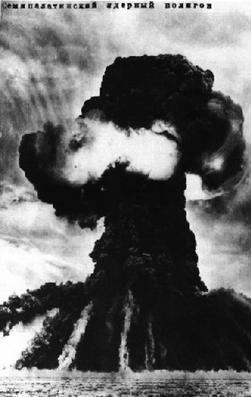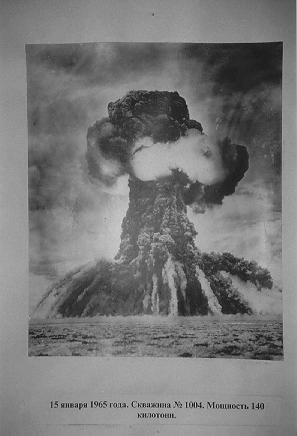Test type Underground test Start date January 15, 1965 Number of tests 124 | Period December 24 Device type Fission | |
 | ||
Max. yield Total yield 140 kilotons of TNT (590 TJ) Similar Sedan, Tsar Bomba, Trinity, Castle Bravo, Canopus | ||
Chagan (Чага́н) was a Soviet underground nuclear test conducted at the Semipalatinsk Test Site on January 15, 1965.
Contents
Description

Chagan was the first and largest of the 124 detonations in the Nuclear Explosions for the National Economy program, designed to produce peaceful nuclear explosions (PNEs) for earth-moving purposes. The concept of using PNEs to create artificial lakes, harbors and canals was modeled after a United States program, Operation Plowshare, which conducted the first peaceful nuclear explosion (the 104 kt Sedan shallow cratering test) at the Nevada Test Site in July 1962.

Described as a "near clone" of the Sedan shot, Chagan's yield was the equivalent of 140 kilotons of TNT and sought to produce a large conical crater suitable for a lake. The site was a dry bed of the Chagan River (tributary of Irtysh River) at the edge of the Semipalatinsk Test Site, and was chosen such that the lip of the crater would dam the river during its high spring flow. The resultant lake has a diameter of 408 m (1,339 ft) and is 100 m (330 ft) deep.

Shallow subsurface (open) cratering explosions such as Sedan or Chagan release a great deal of steam and pulverized rock along with approximately 20% of the bomb's normal fission products into the atmosphere. Although the vast majority of this fallout is deposited in the general area of the test, it also produced a small but measurable radioactive plume, which in Chagan's case was detected over Japan and initially prompted complaints from the US that the Soviets were violating the provisions of the October 1963 Limited Test Ban Treaty, which banned atmospheric tests and any vented (or "open") subsurface detonation which caused "radioactive debris to be present outside the territorial limits of the State under whose jurisdiction or control such explosion is conducted." The matter was eventually abandoned, and in any case all subsequent Soviet shots were smaller.

The photo of the Chagan shot is occasionally confused with that of the Soviet Joe 1 test. The correct image shows a squat, ground-level cloud similar to the Sedan shot rather than the tall mushroom cloud of the tower-detonated Joe-1.
Lake Chagan

Lake Chagan or Lake Balapan, Kazakhstan, a lake created by the Chagan nuclear test roughly 10,000,000 m3 (8,100 acre·ft) in size, is still radioactive, and has been called the "Atomic Lake." As at the Trinity site of the first United States nuclear weapon test in Alamogordo, New Mexico, the exposed rock was melted into a glassy substance.

